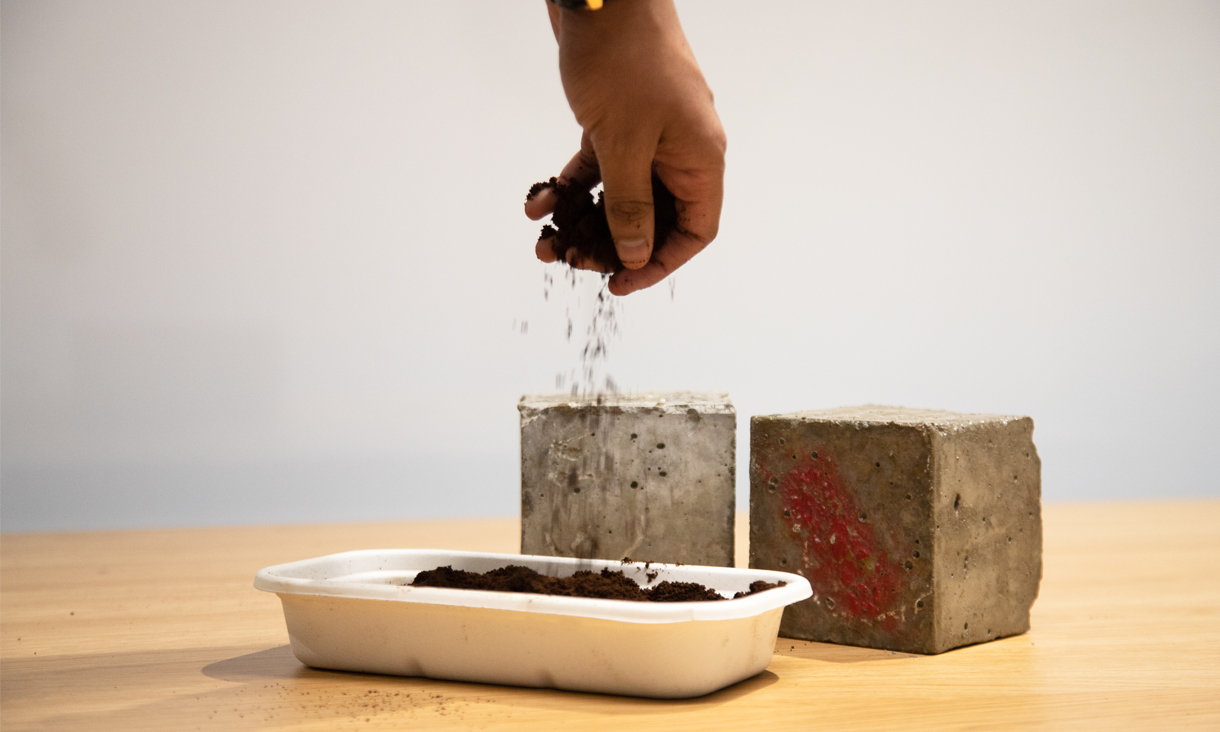
From coffee to concrete: Engineering solutions to our most pressing problems
A new project from RMIT University could see the waste from the 1.3 million cups of coffee drunk daily in Australia turned into concrete used in homes, driveways or office buildings.
As part of the venture, a keen coffee-drinking RMIT engineering lecturer and his students have looked to the construction industry for a novel solution to reduce coffee grinds – using it in concrete.
Most concrete mixes contain up to 80% sand – the third most used resource on the planet. But even this seemingly endless resource cannot keep up with current demand, and its extraction from places with fragile ecosystems can have a huge environmental impact.
The group found they could replace up to 10% of sand in a concrete mix with coffee grounds and have even produced sample “coffee bricks”, which will be on display at RMIT’s EnGenius event on Wednesday 23 October.
The event will see more than 1,000 final year engineering students from 11 disciplines showcase their projects and products to industry and the public.
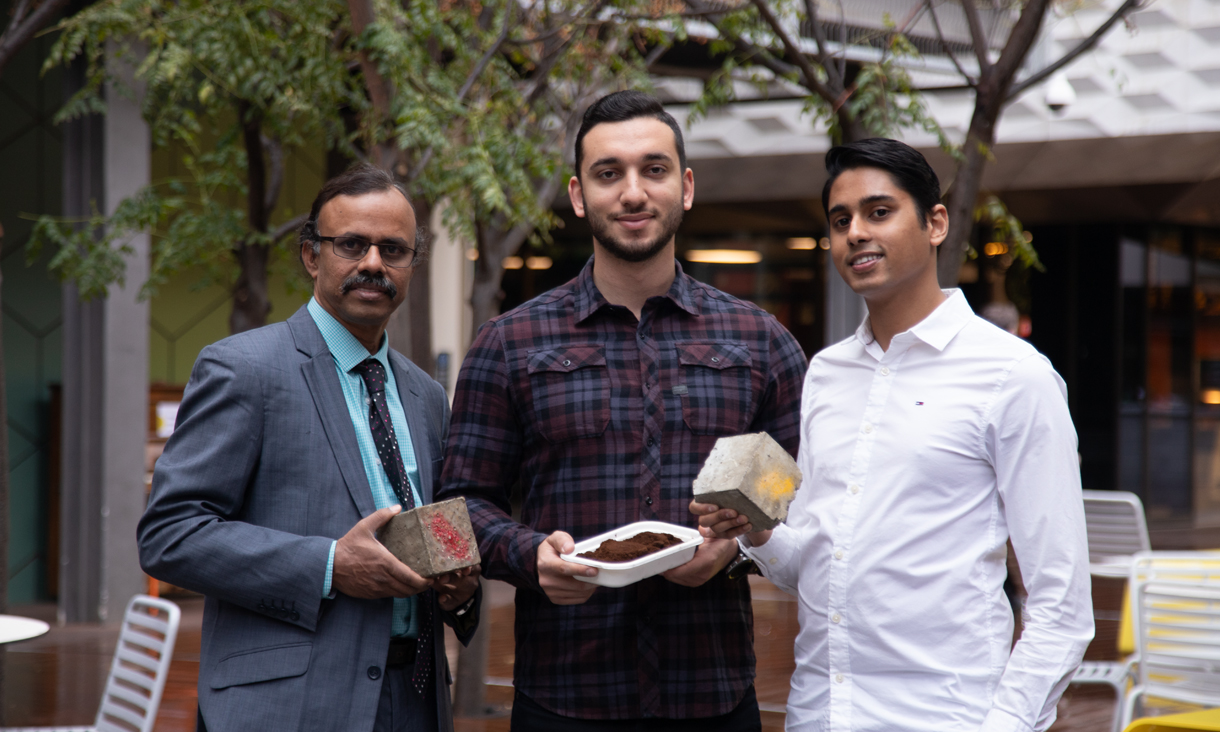 L-R: Dr Srikanth Venkatesan, Anthony Abiad and Senura Kohombange
L-R: Dr Srikanth Venkatesan, Anthony Abiad and Senura Kohombange
Bachelor of Engineering (Civil and Infrastructure) (Honours) students Senura Kohombange and Anthony Abiad worked with Senior Lecturer in the School of Engineering Dr Srikanth Venkatesan to test and develop the “coffee bricks”.
“It seems fitting than we’re working on this project in Melbourne, a city known for its great coffee culture,” Kohombange said.
“We are very excited to present the project and shared the idea with others and showcase how some innovative thinking can a waste product can turn into an everyday construction material.”
There were an estimated 2,600 cafes in the City of Melbourne alone in 2017, producing about 156,000kg of coffee-ground waste every month.
Venkatesan said as a regular cappuccino drinker he was inspired to find a solution to the waste and only had to look to the bottom of his coffee cup to get started.
“The biggest challenge is that the addition of spent coffee grinds can lead to a reduction in strength of concrete, but with further testing and development the product could have exciting real-world applications,” he said.
A helping hand for prosthetics users
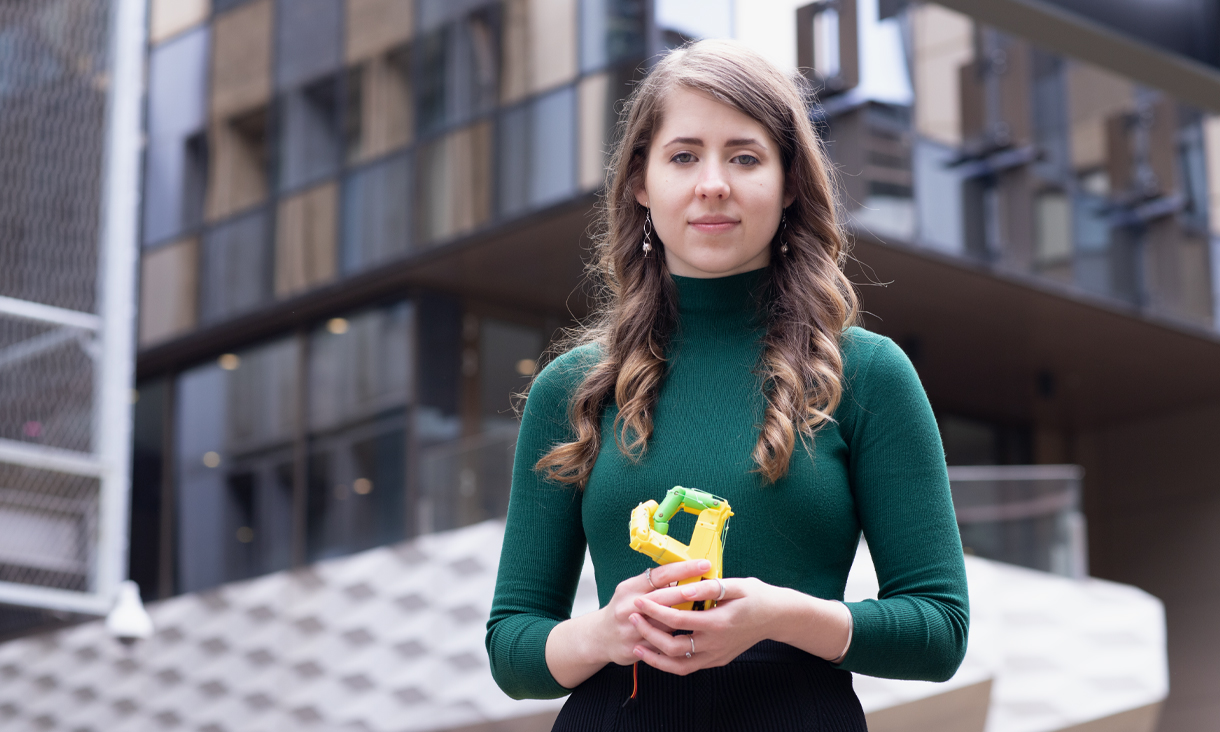 Engineering student Sabrina Meikle
Engineering student Sabrina Meikle
Another project to be presented at EnGenius is a three-digit prosthetic hand which mimics the human tendons, muscle, and bone structure.
Bachelor of Engineering (Honours) student Sabrina Meikle designed a better solution to current prosthetics, which don’t require constant power consumption by the user to hold onto objects.
Her 3D model is capable of gripping objects passively, to provide amputees with the realistic feeling of a limb.
Weathering the storm of displacement
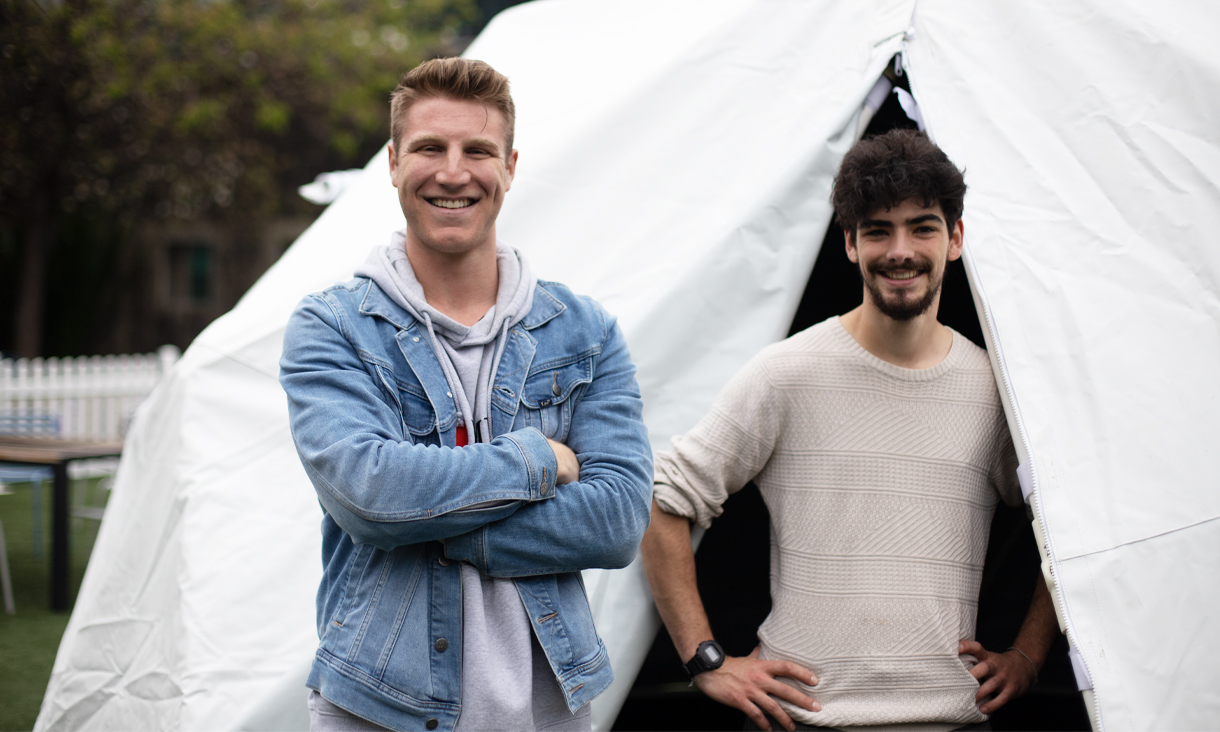 L-R: Civil engineering students Shaun Infantino and Theo Mimoun, part of the group who designed and produced the post-disaster shelter
L-R: Civil engineering students Shaun Infantino and Theo Mimoun, part of the group who designed and produced the post-disaster shelter
Bachelor of Engineering (Civil and Infrastructure) (Honours) Theo Mimoun discovered a different global issue, when he travelled to Vietnam last year as part of an RMIT internship and witnessed first-hand the power and destruction of tropical storm Pabuk.
Determined to find a solution, the trip became an inspiration for him and four other students to design and develop a temporary shelter design for the thousands of families displaced from their homes each year due to natural disasters.
The design is more robust and substantial than existing options on the market – capable of resisting cyclone winds and being constructed on hard surfaces, soil, and sand, and is intended to be set up easily by two people within 30 minutes.
Mimoun said it had become a passion project for them.
“We told ourselves, ‘If we can build these people a shelter, they can focus on building a better life,’” he said.
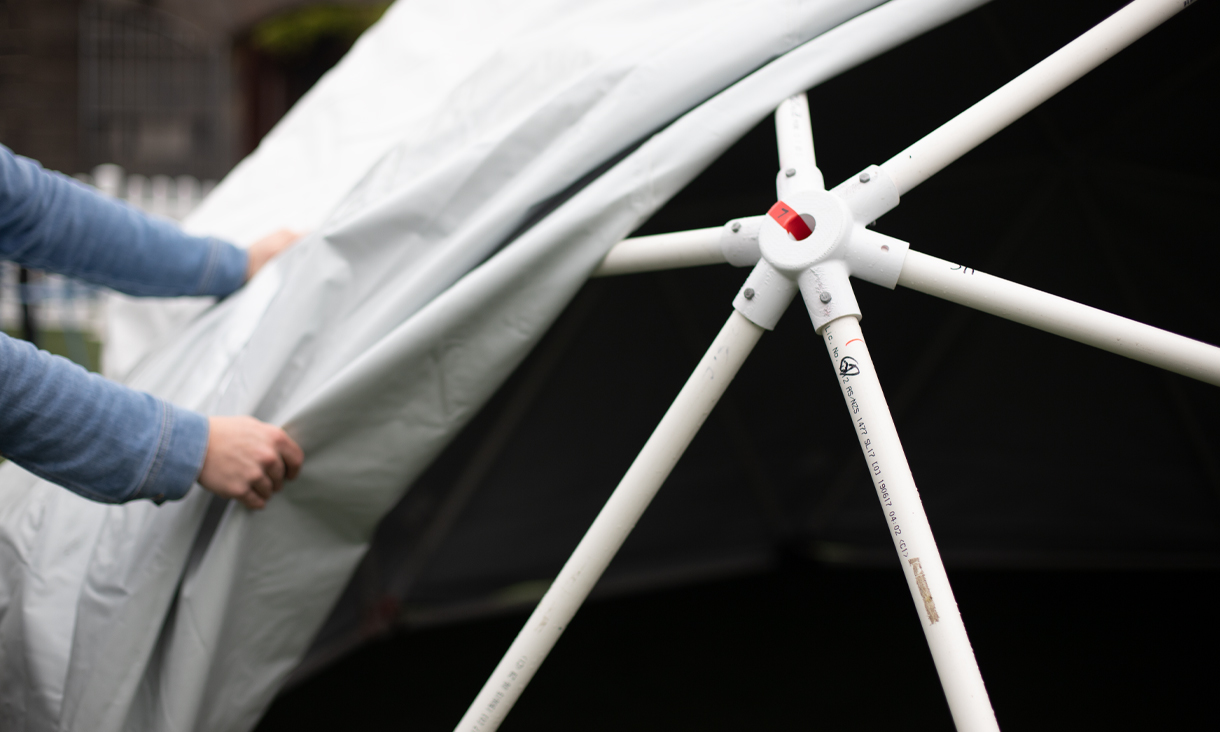 The shelter can be made as large or small as needed using the same core components
The shelter can be made as large or small as needed using the same core components
Bright young things
Executive Dean School of Engineering, Distinguished Professor Adrian Mouritz said RMIT was proud to produce the next generation of engineers who were designing solutions to real world problems.
“EnGenius takes engineering out of the classroom and brings it to life,” he said.
“Visitors to EnGenius can see and interact with more than 350 innovative student projects, from prosthetic fingers that can be extended and flexed to a lightweight shelter that can be set up quickly after a natural disaster.
“Many of these projects focus on making our world a better place, be it more inclusive or more sustainable.”
Mouritz said RMIT was committed to preparing students for life and work.
“Industry has been central to our identity for more than 130 years,” he said.
“Meaningful partnerships and events like EnGenius provide opportunities for industry to meet its future workforce and students to connect with employers.”
- Ends
For EnGenius event access, interviews and media enquiries, please contact RMIT Communications: 0439 704 077 or news@rmit.edu.au
- Research
- Student experience
- Engineering
- Science and technology
- Industry
Acknowledgement of Country
RMIT University acknowledges the people of the Woi wurrung and Boon wurrung language groups of the eastern Kulin Nation on whose unceded lands we conduct the business of the University. RMIT University respectfully acknowledges their Ancestors and Elders, past and present. RMIT also acknowledges the Traditional Custodians and their Ancestors of the lands and waters across Australia where we conduct our business - Artwork 'Sentient' by Hollie Johnson, Gunaikurnai and Monero Ngarigo.